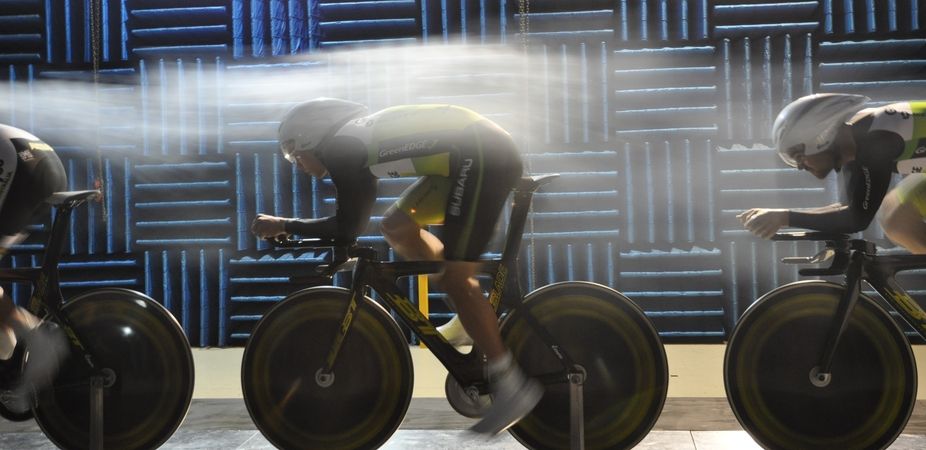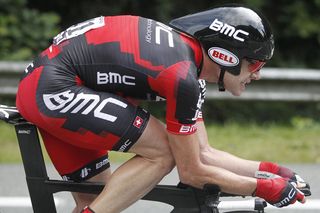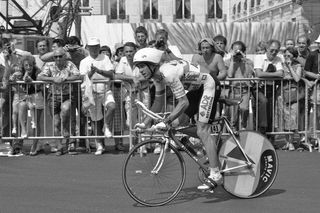
The Aerodynamics of a Tour de France Time Trial

This article was originally published at The Conversation. The publication contributed the article to Live Science's Expert Voices: Op-Ed & Insights.
As the Tour de France approaches its final days, teams will be looking to place their top riders in the best possible position for the all-important individual time trial in the penultimate stage, where the winner of the Tour is determined.
There’s no better example of the importance of this stage than Greg LeMond’s legendary Tour victory in 1989. Fellow rider Laurent Fignon had a 50-second lead heading into the stage, but lost to LeMond by just eight seconds, the smallest winning margin in Tour history.
In 2011, our very own Cadel Evans gained the yellow jersey in the final time trial stage, winning the tour by 94 seconds.

Unlike the gruelling mountain stages the tour is renowned for, the final 2014 individual time trial stage – a 54-kilometre race from Bergerac to Perigueux tomorrow – will take place over relatively flat terrain.
This stage exposes individual riders with no team members to support them across the finish line. It showcases individual speed (typically around 55km/h) and those who can cycle from start to finish in the shortest time possible.
Cycling to win
There are two critical factors that govern the time taken for a rider to complete the stage:
Sign up for the Live Science daily newsletter now
Get the world’s most fascinating discoveries delivered straight to your inbox.
- the power output they sustain over the duration of the course
- the magnitude of the resistive forces that oppose their forward motion.
At these speeds and with shallow hill gradients, up to 95% of the total resistance is attributed to the aerodynamic drag force. This is why aerodynamics is particularly critical to time trial stages, and why teams invest so many resources in finding ways to minimise drag force.
The drive to improve aerodynamics over the past two decades has impacted the positioning of riders on their bicycles, leading to advances in frame design and equipment geometry.
For the final stage of the Tour, riders will replace their standard road bicycles with more aerodynamically shaped frames and wheels, assume positions of lower aerodynamic drag, and utilise streamlined helmets and skin-suits.
Many attribute Greg LeMond’s famous 1989 victory to a last-minute decision to race with revolutionary time trial bars (which are now standard) and a streamlined helmet.

We now understand that this decision likely provided him with a competitive advantage over Fignon, who rode with the less streamlined standard circular-tubed cow-bars and no helmet.
Optimising aerodynamics
To continue to gain a competitive advantage, athletes in the Tour need to take full advantage of the latest research in cycling aerodynamics, which investigates new ways to further reduce aerodynamic drag force and optimise rider position and equipment.
The primary tool used to optimise the aerodynamics of the bicycle-rider system is the wind tunnel, fast becoming a necessity for top-performing teams across the world.
The Monash Wind Tunnel being used in the lead up to the 2012 London Olympics.
Once these were constructed for the primary purpose of aerospace and automotive applications. However recently we have seen leading bicycle manufactures develop their own wind tunnels in order to optimise the aerodynamic performance of their bicycle designs and cycling teams.
Finely tuned wind tunnel testing simulates different environmental conditions – even the interactions between multiple riders. Current cycling research investigates the complete system and all interactions between the cyclist, their bicycle, and the equipment choices available to them – rather than treating each as a separate component.

According to David Burton, manager of the Monash Wind Tunnel:
Aerodynamics is critical to these types of events, which are often reduced to seconds. Using force measurements performed in the wind tunnel, we often see that minor changes in rider position, equipment or test conditions could easily account for the small margins seen over the duration of a 50-kilometre time trial.
Due to the large role that the aerodynamic forces play in cycling speed, the largest gains in cycling performance are most likely to arise from research that pushes the boundaries of equipment design, rider position and race tactics, with a focus on optimising aerodynamics.
One thing is for certain: aerodynamics will have played a significant part in the success of the rider who comes down the Champs Elysees and is named the winner of the 2014 Tour de France.
Timothy Crouch receives funding from the Australian Research Council (project number LP100200090).
This article was originally published on The Conversation. Read the original article. Follow all of the Expert Voices issues and debates — and become part of the discussion — on Facebook, Twitter and Google +. The views expressed are those of the author and do not necessarily reflect the views of the publisher. This version of the article was originally published on Live Science.












